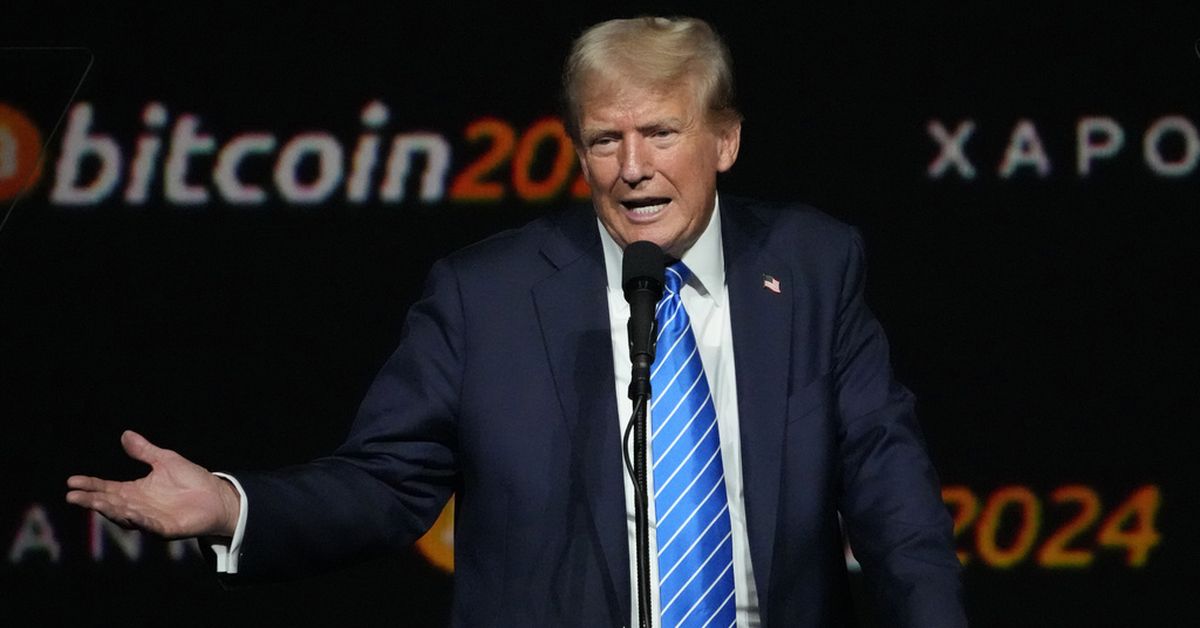The momentous moment came just hours after the president-elect signaled a lighter regulatory approach to the crypto industry when he said he intended to nominate cryptocurrency advocate Paul Atkins as the next chairman of the Securities and Exchange Commission.
Bitcoin has soared to unprecedented heights since Trump won the November 5 election. The cryptocurrency rallied from $69,374 on election day and rose to $103,713 on Wednesday (Thursday AEDT), according to CoinDesk. Just two years ago, Bitcoin fell below $17,000 after the collapse of the crypto exchange FTX.
It is uncertain how long Bitcoin will stay above the $100,000 mark. It fell back to just below $102,000 early Thursday.
As with everything in volatile cryptocurrency, the future is impossible to predict. And while some are optimistic about future gains, other experts continue to warn of investment risks.
Here’s what you need to know.
Archive. What is cryptocurrency again?
Cryptocurrency has been around for a while. But you’ve probably heard about it more and more over the past few years.
Broadly speaking, cryptocurrency is digital money. This type of currency is designed to work through an online network without a central authority — meaning it’s usually not backed by a government or banking institution — and transactions are recorded using a technology called blockchain.
Bitcoin is the largest and oldest cryptocurrency, although other assets such as ethereum, tether and dogecoin have also gained popularity over the years.
Some investors see cryptocurrency as a “digital alternative” to traditional money, but the majority of everyday financial transactions are still done using fiat currencies like the dollar. Additionally, Bitcoin can be highly volatile, with its price dependent on larger market conditions.
Much of the recent action is related to the outcome of the US presidential election.
Trump, once a crypto skeptic, has promised to make the US the “crypto capital of the planet” and create a “strategic reserve” of bitcoins.
His campaign accepted donations in cryptocurrency, and he wooed fans at a bitcoin conference in July. He also launched World Liberty Financial, a new venture with family members to trade cryptocurrencies.
Crypto industry players hailed Trump’s victory in hopes that he would be able to push through legislative and regulatory changes they have long lobbied for — which, broadly speaking, aim for an increased sense of legitimacy without too much red tape.
Trump made a move in that direction on Wednesday when he said he intended to nominate Paul Atkins to chair the Securities and Exchange Commission. Atkins was an SEC commissioner during the George W. Bush presidency. In the years since he left the agency, Atkins has argued against over-regulation of the market. He joined the Token Alliance, a cryptocurrency advocacy organization, in 2017.
Under current chairman Gary Gensler, the SEC has cracked down on the crypto industry, punishing a number of companies for violating securities laws. But he also faced criticism from industry players in the process, such as Robinhood’s chief legal officer, who described Gensler’s approach to crypto as “rigid” and “adversarial.” Gensler will step down when Trump takes office.
One cryptocurrency-friendly move the SEC made under Gensler was the approval in January of spot bitcoin ETFs, or exchange-traded funds, which allow investors to hold a stake in bitcoin without directly buying it. Spot ETFs were the dominant driver of bitcoin’s price before the election — but, like much of the crypto’s recent momentum, saw record inflows after the election.
History shows that you can lose money in crypto as quickly as you make it. Long-term price behavior depends on larger market conditions. Trading continues anytime, every day.
At the start of the COVID-19 pandemic, Bitcoin was just over $5,000. Its price has risen to nearly $69,000 by November 2021. during a period of high demand for technology assets, but later collapsed during an aggressive series of interest rate hikes by the Federal Reserve. And the FTX crash at the end of 2022. significantly undermined confidence in crypto as a whole, with Bitcoin falling below US$17,000.
Investors began to return in large numbers as inflation began to cool – and profits skyrocketed on the anticipation and then early success of spot ETFs. But experts still stress caution, especially for investors with small pockets. And lighter regulation from the incoming Trump administration could mean fewer safeguards.
“I would say keep it simple. And don’t take more risk than you can afford,” said Adam Morgan McCarthy, a research analyst at Kaiko, adding that there is no “magic eight ball” to know for sure what’s next.
What about the climate impact?
Assets like Bitcoin are produced through a process called “mining”, which consumes a lot of energy. Operations relying on sources of pollution have been of particular concern over the years.
Recent research published by the United Nations University and Earth’s Future magazine found that the carbon footprint of Bitcoin mining in 2020-2021. in 76 nations is equivalent to the emissions from burning 38 billion kilograms of coal or running 190 natural gas-fired power plants. Coal meets the majority of Bitcoin’s electricity needs (45 percent), followed by natural gas (21 percent) and hydropower (16 percent).
The environmental impact of Bitcoin mining comes down largely to the energy source used. Industry analysts say the use of clean energy has increased in recent years, coinciding with growing calls for climate protection
